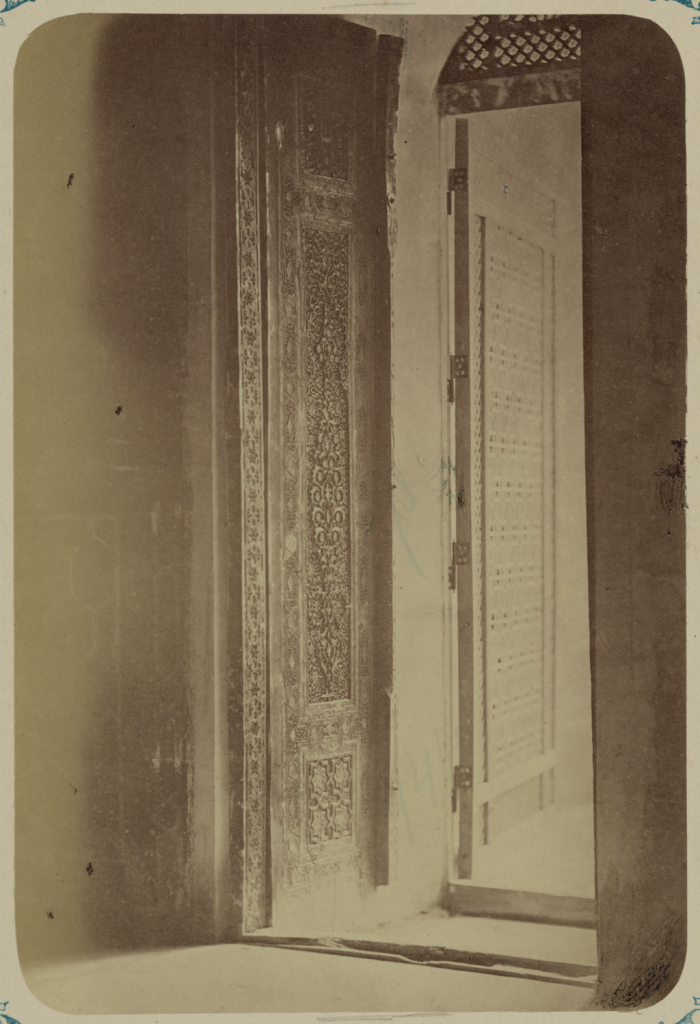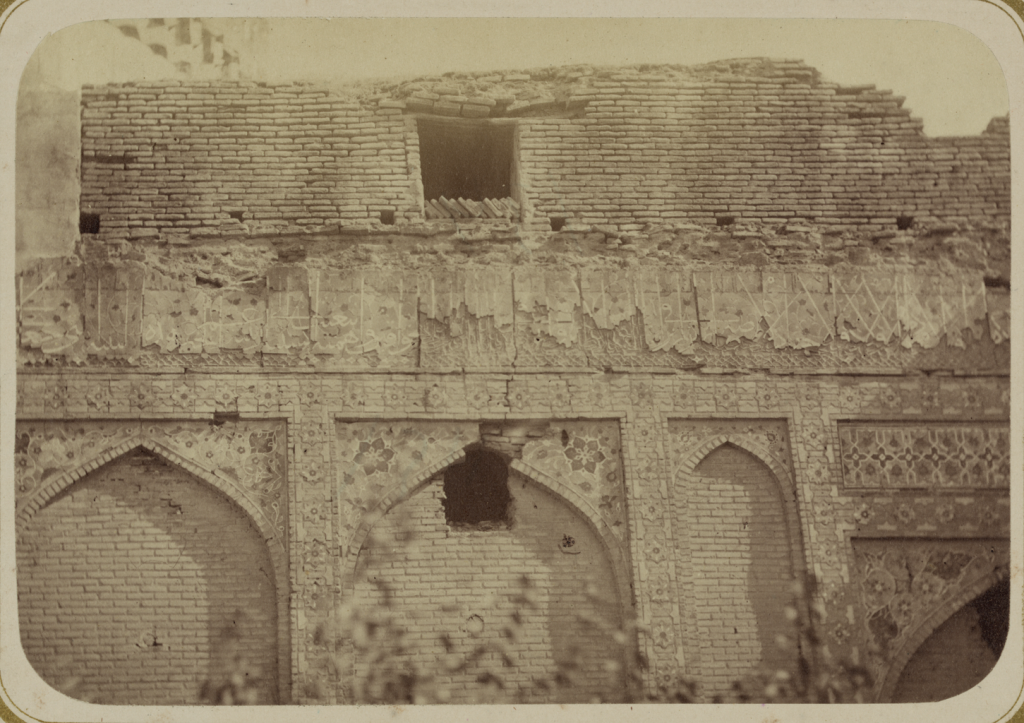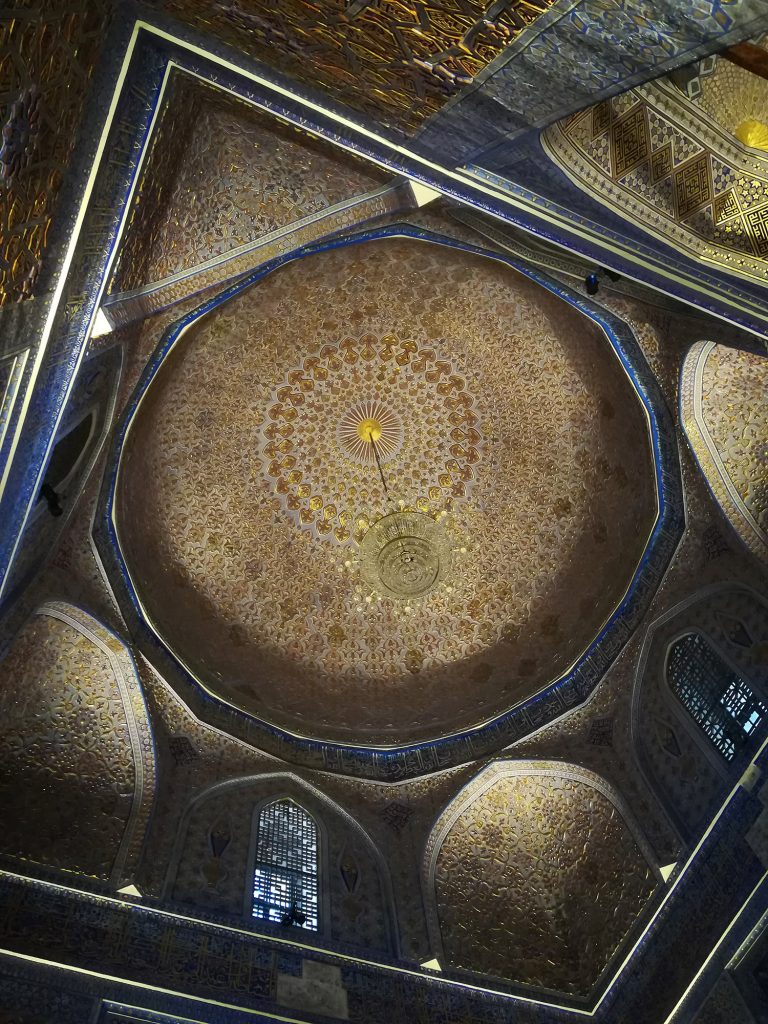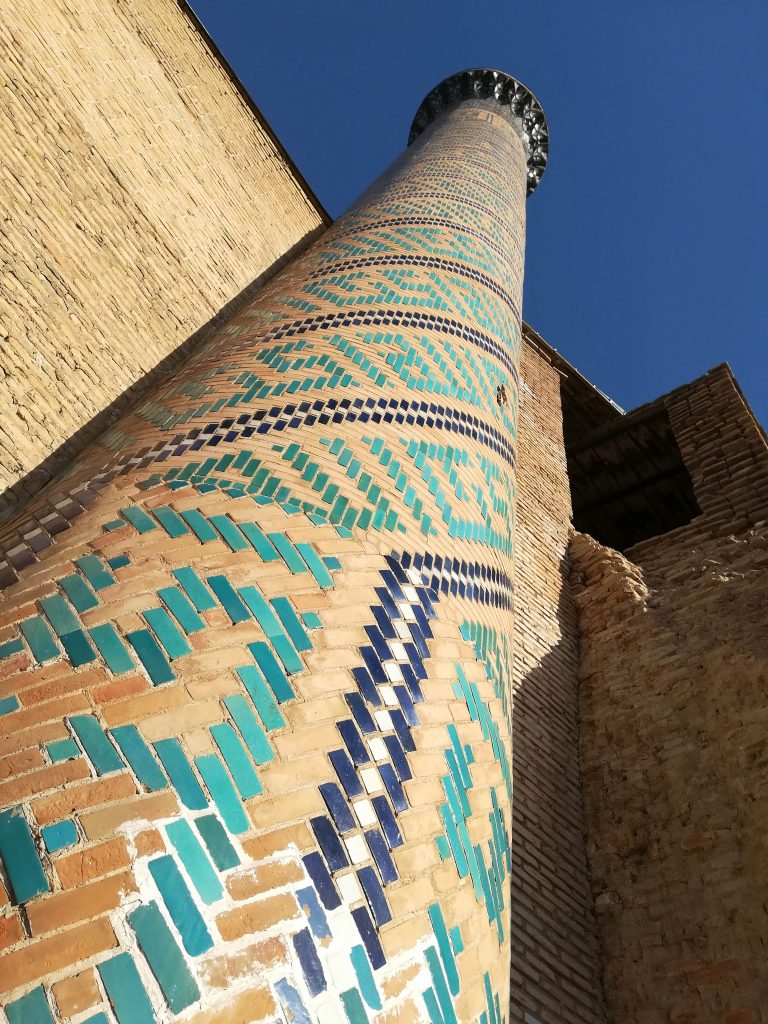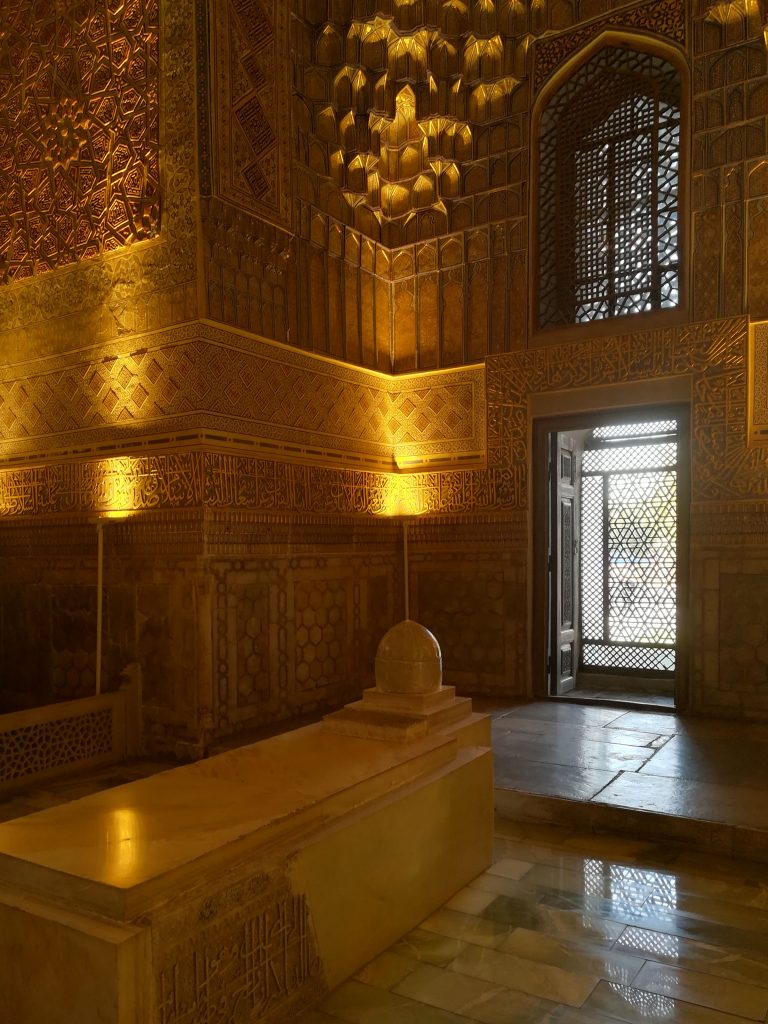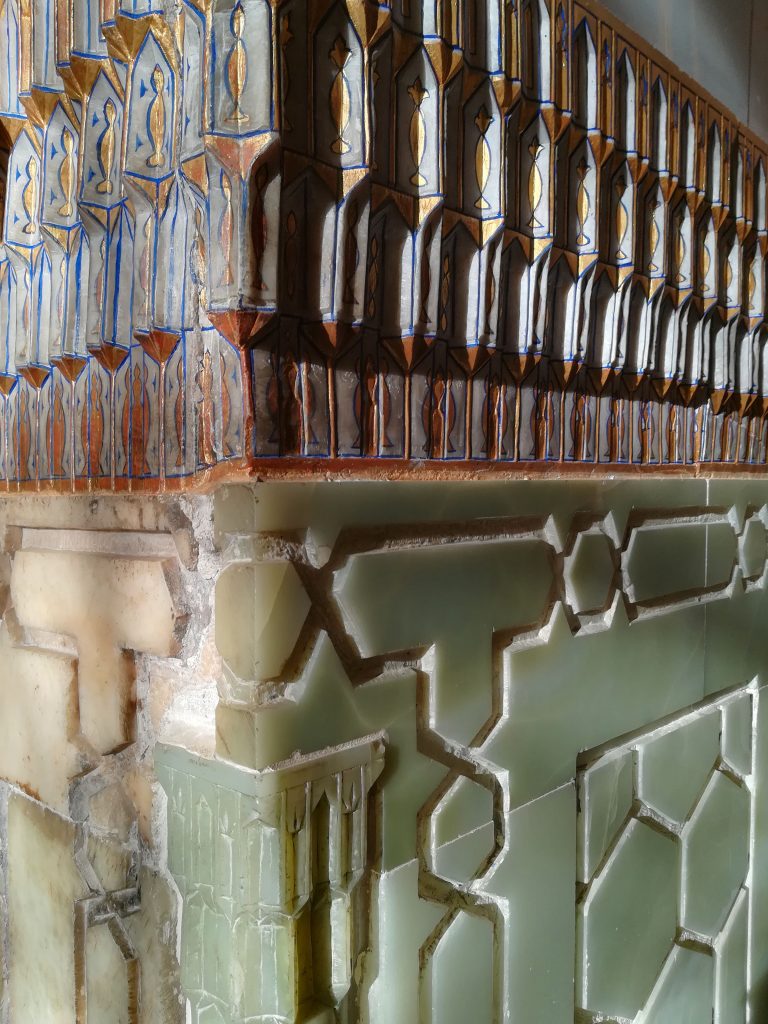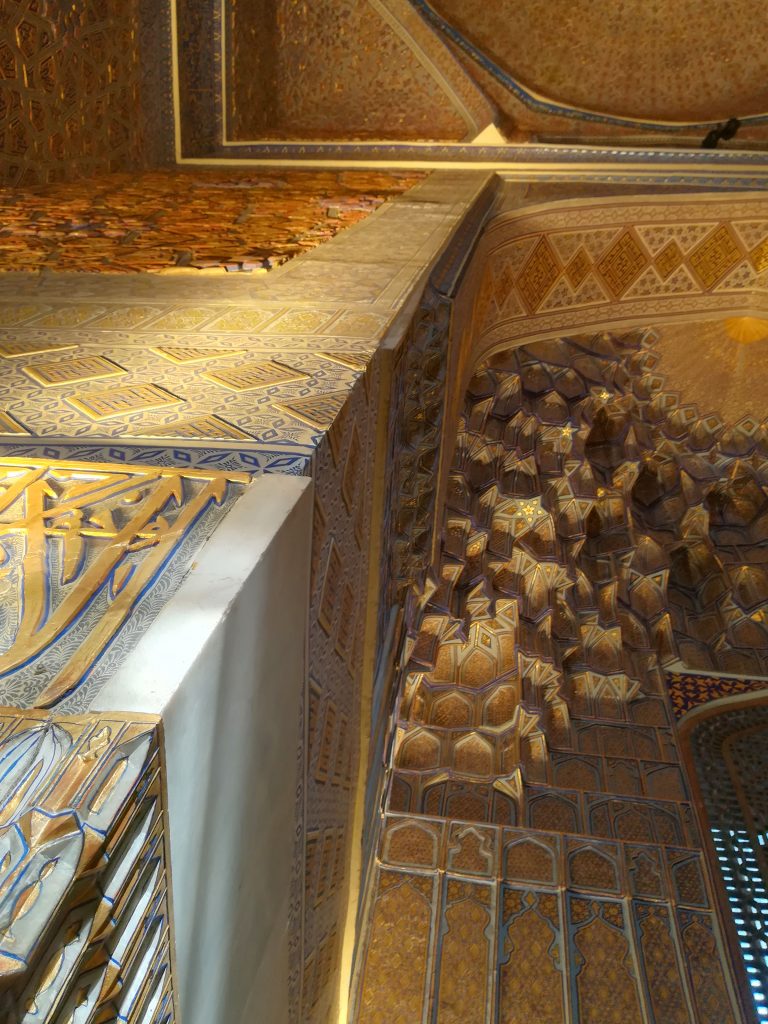Although known primarily as the burial place of Timur (Tamerlane), Gur-Emir was begun by Timur in 1403 to commemorate the death of his beloved grandson, Muhammad Sultan, who had built an educational center, including a madrasah (religious school) and memorial complex (khanaka) on the site in the late 14th century. His sudden death at the age of 27 deprived Timur of his chosen successor, and the ruler’s grief was expressed in the imposing dimensions of the mausoleum. The shrine was still not complete at the time of Timur’s own death from pneumonia in 1405. With his burial there, Gur-Emir became in effect the mausoleum of the Timurids. Completed by Timur’s grandson Ulugh Beg, Gur-Emir included the main domed structure, as well as a madrasah, khanaka, four minarets, and a large entrance structure to the courtyard. The buildings were covered with ceramic art.
Aunque se conoce principalmente como el lugar de enterramiento de Timur (Tamerlán), Gur-Emir fue iniciado por Timur en 1403 para conmemorar la muerte de su querido nieto, Muhammad Sultan, que había construido un centro educativo, incluyendo una madrasa (escuela religiosa) y un complejo conmemorativo (khanaka) en el lugar a finales del siglo XIV. Su repentina muerte a los 27 años privó a Timur de su sucesor elegido, y el dolor del gobernante se expresó en las imponentes dimensiones del mausoleo. El santuario aún no estaba terminado cuando Timur murió de neumonía en 1405. Con su entierro allí, Gur-Emir se convirtió en el mausoleo de los timúridas. Terminado por el nieto de Timur, Ulugh Beg, Gur-Emir incluía la estructura principal con cúpula, así como una madrasa, una khanaka, cuatro minaretes y una gran estructura de entrada al patio. Los edificios estaban cubiertos de cerámica.
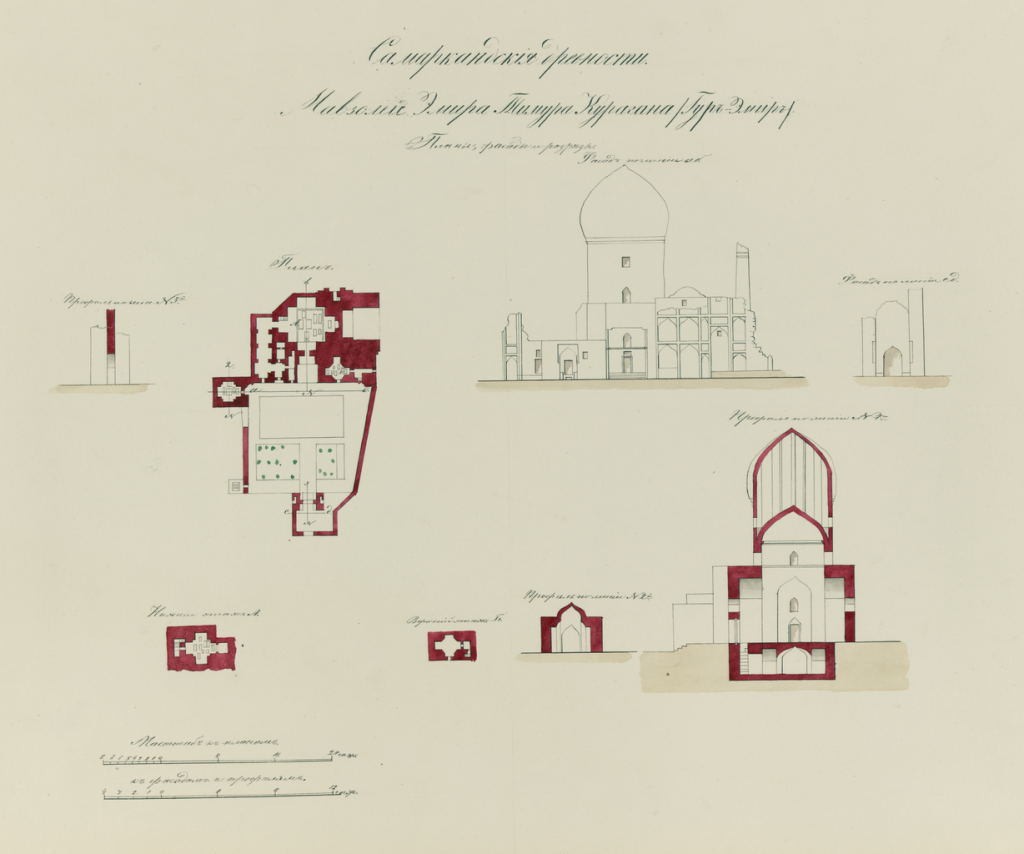


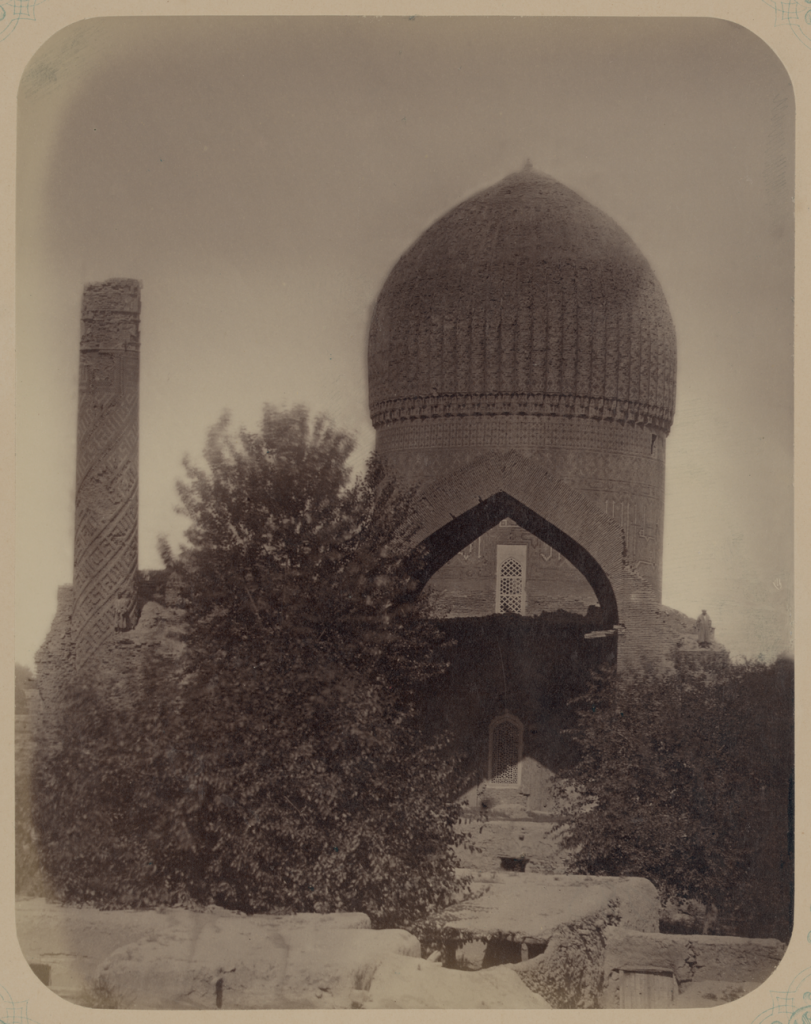

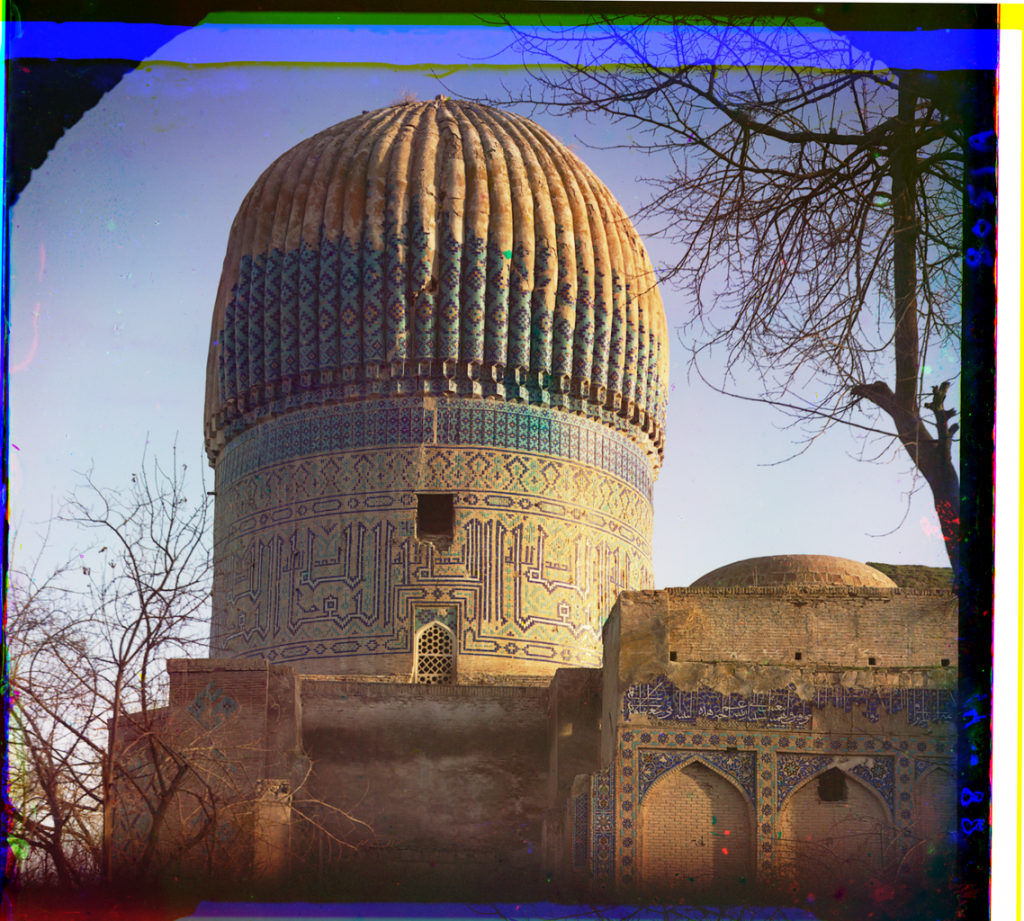

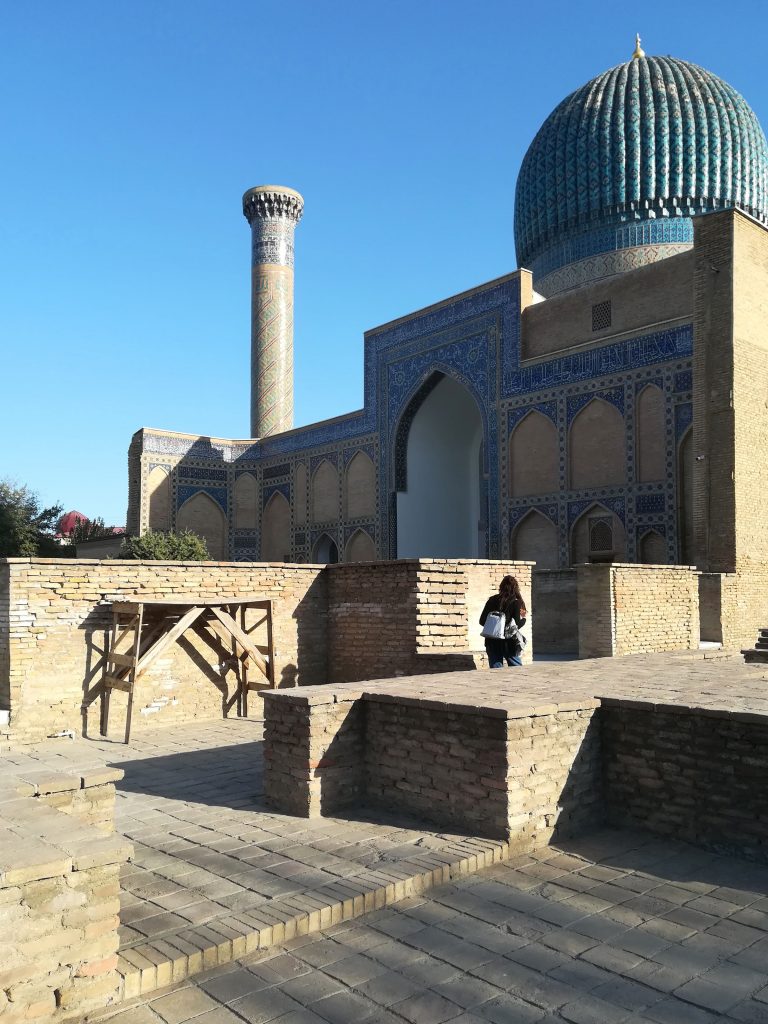
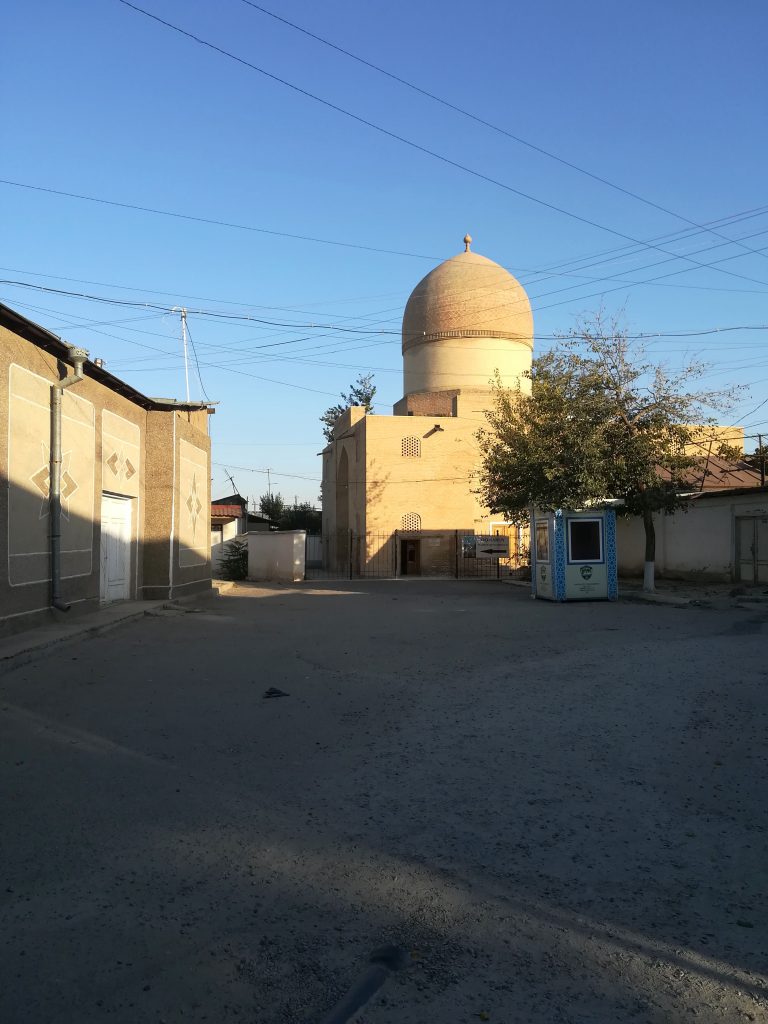
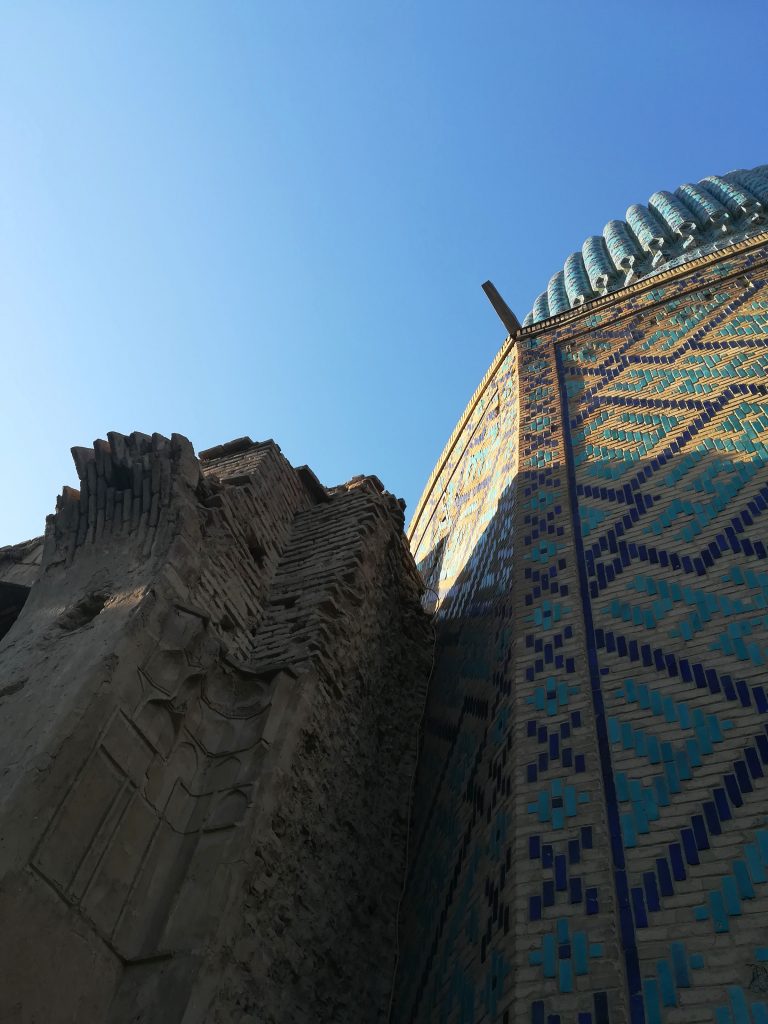
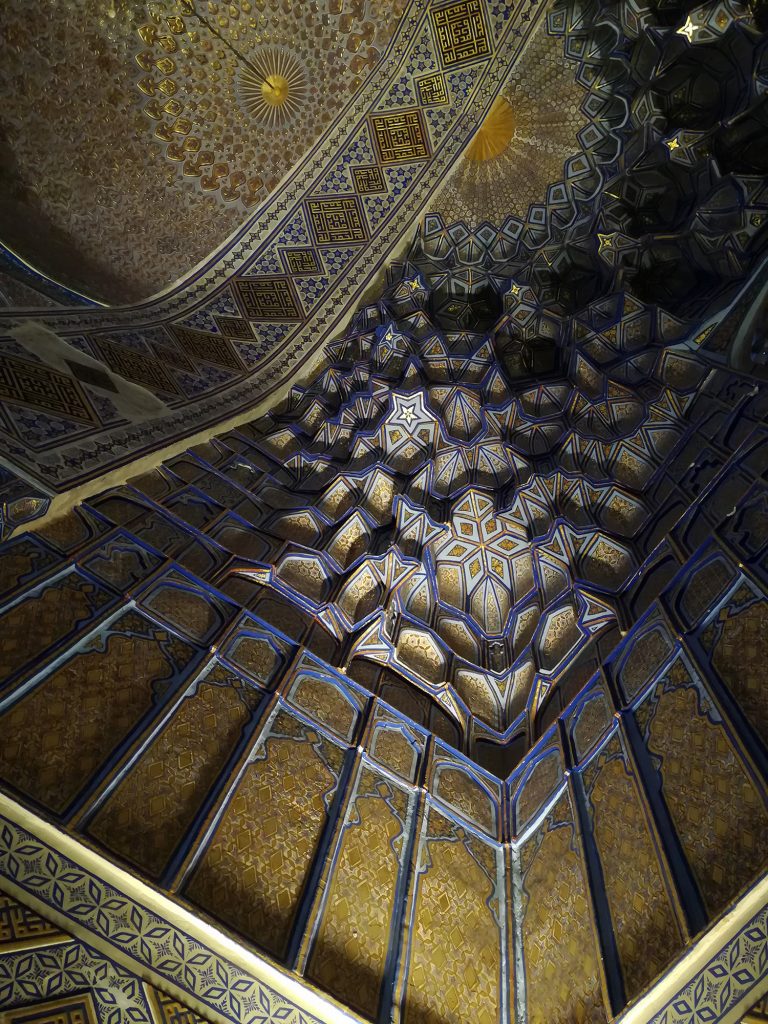
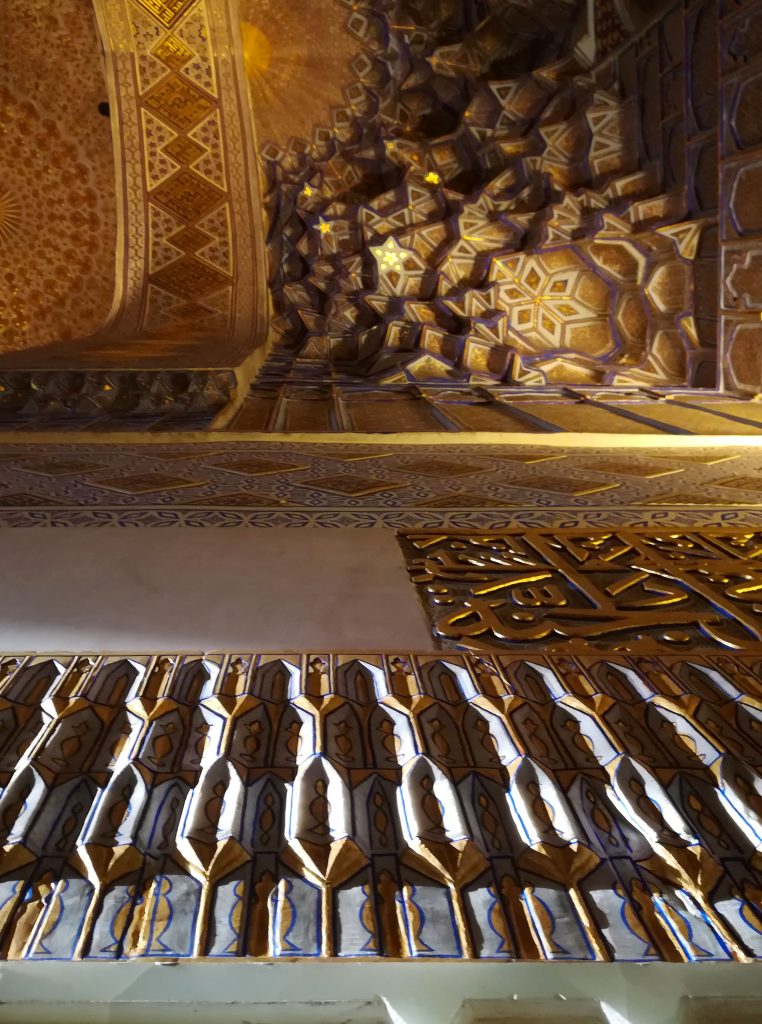
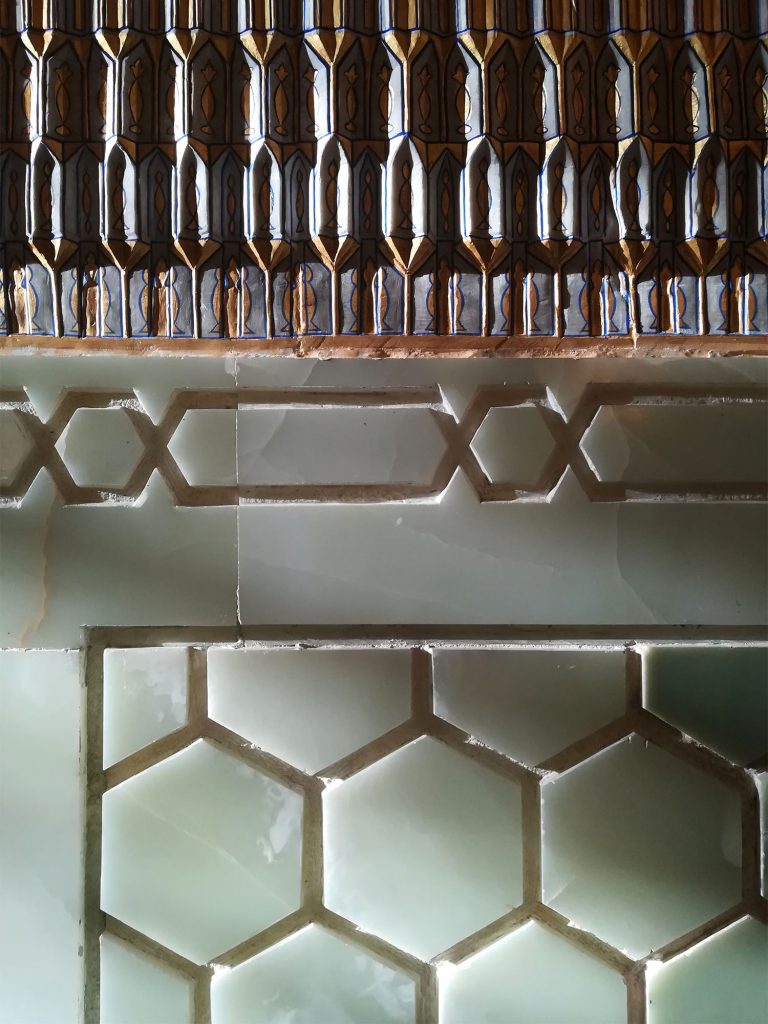
VIA:
Text and old images via Library of Congress

